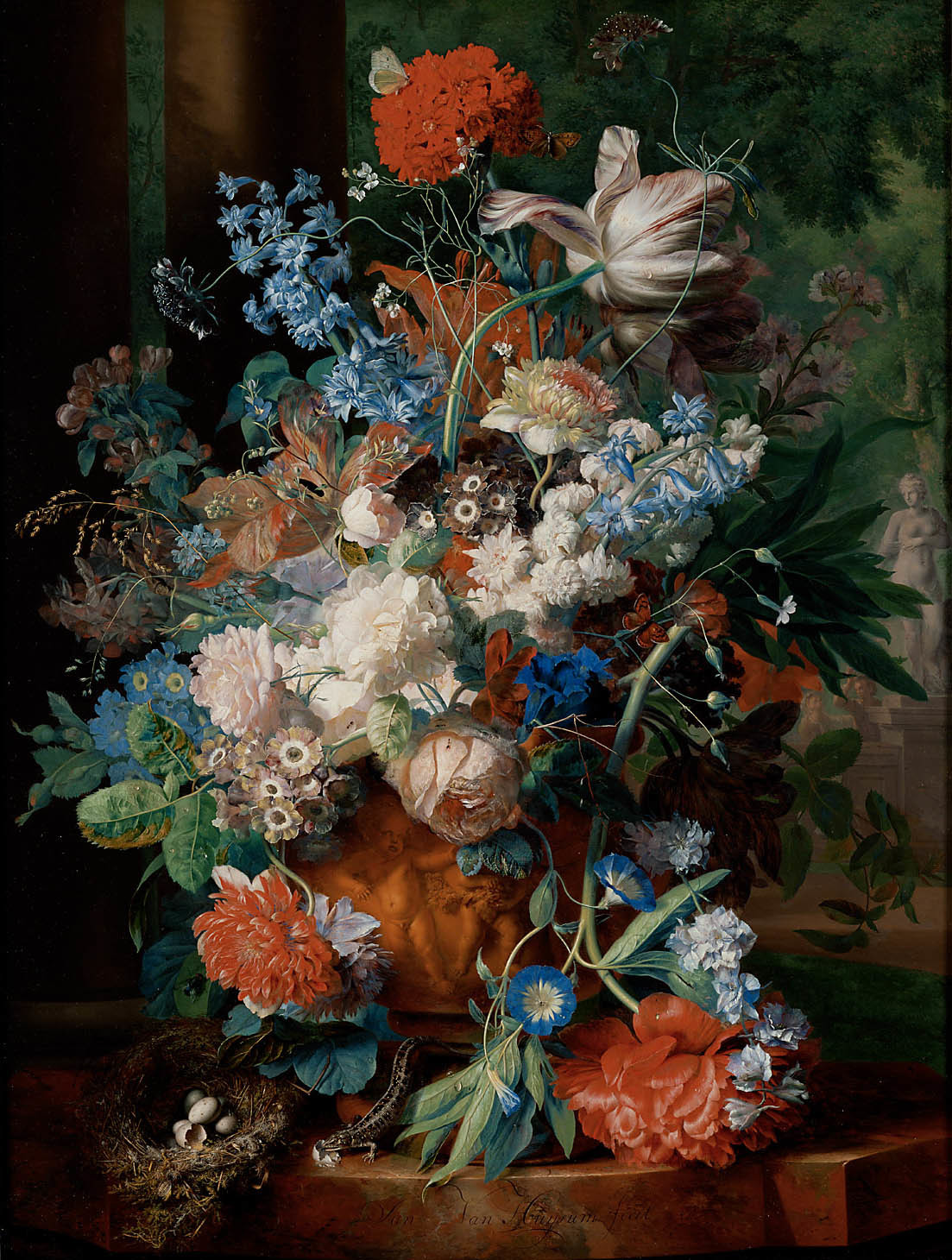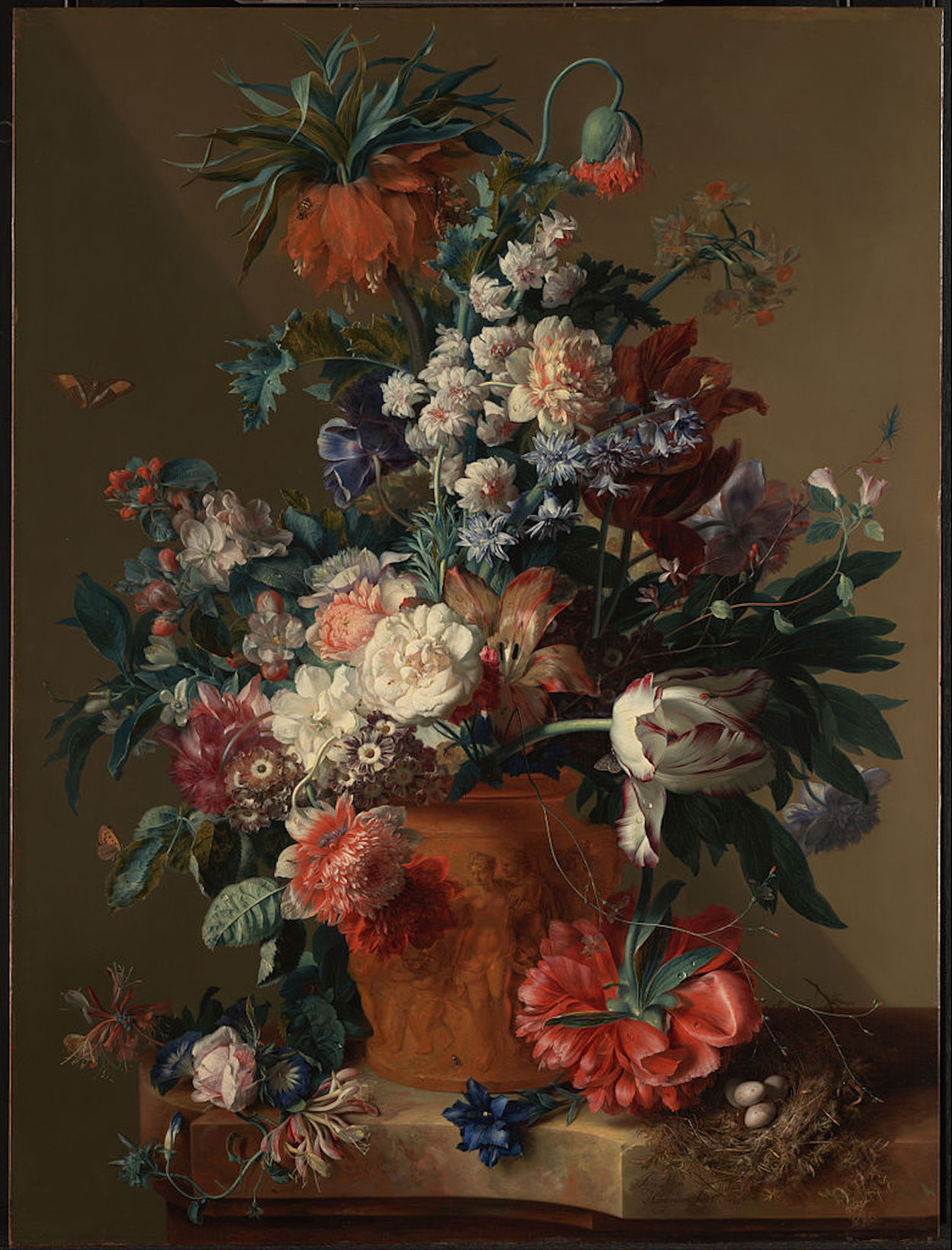Jan van Huysum was one of the most prominent painters of flower and fruit still lifes. Because his paintings were much sought-after, he could also charge high sums for his work. The price of his floral pictures was very much in keeping with the high market value of the flowers he depicted. Huysum’s bouquets with their fine detail and brilliant surface effects are a high point in a late stage of flower painting.
In the background behind the magnificent display of flowers is a park with a statue of Venus being admired by two men. Venus is the goddess of love and a symbol of the beauty of youth in flower. When Venus emerged from the foam of the sea at birth, the drops of water from her body are said to have turned into roses as they touched the ground. In the foreground a sea of flowers is welling up from a clay vase, which depicts two cupids playing with a wreath of vine leaves and grapes. The variety and splendor of the flowers’ colors are complemented by the scent that seems to emanate from them.
In their perfect beauty they appear almost tangible, and they are depicted with botanical exactness in every stage of budding, blooming, and withering. The individual petals, drops of water, and insects are all rendered with striking precision; even such tiny details as the ants are depicted in an incredibly true-to-life manner. A bird’s nest has been taken down, and now the eggs in it (symbols of regenerating life) are at the mercy of the lizard. The flowers share the same fate: once picked, they continue to bloom for only a short time before they wither. The insects join in this chorus of transience, nibbling on the plants and thus hastening the decay of beauty.
We present today's painting thanks to our favorite Kunsthistorisches Museum in Vienna.
P.S. We love flowers in art, if you do too, here's a beautiful Vase with Flowers by Rachel Ruysch and here you can read about the famous Sunflowers of Vincent van Gogh.


 Jan Huysum
Jan Huysum